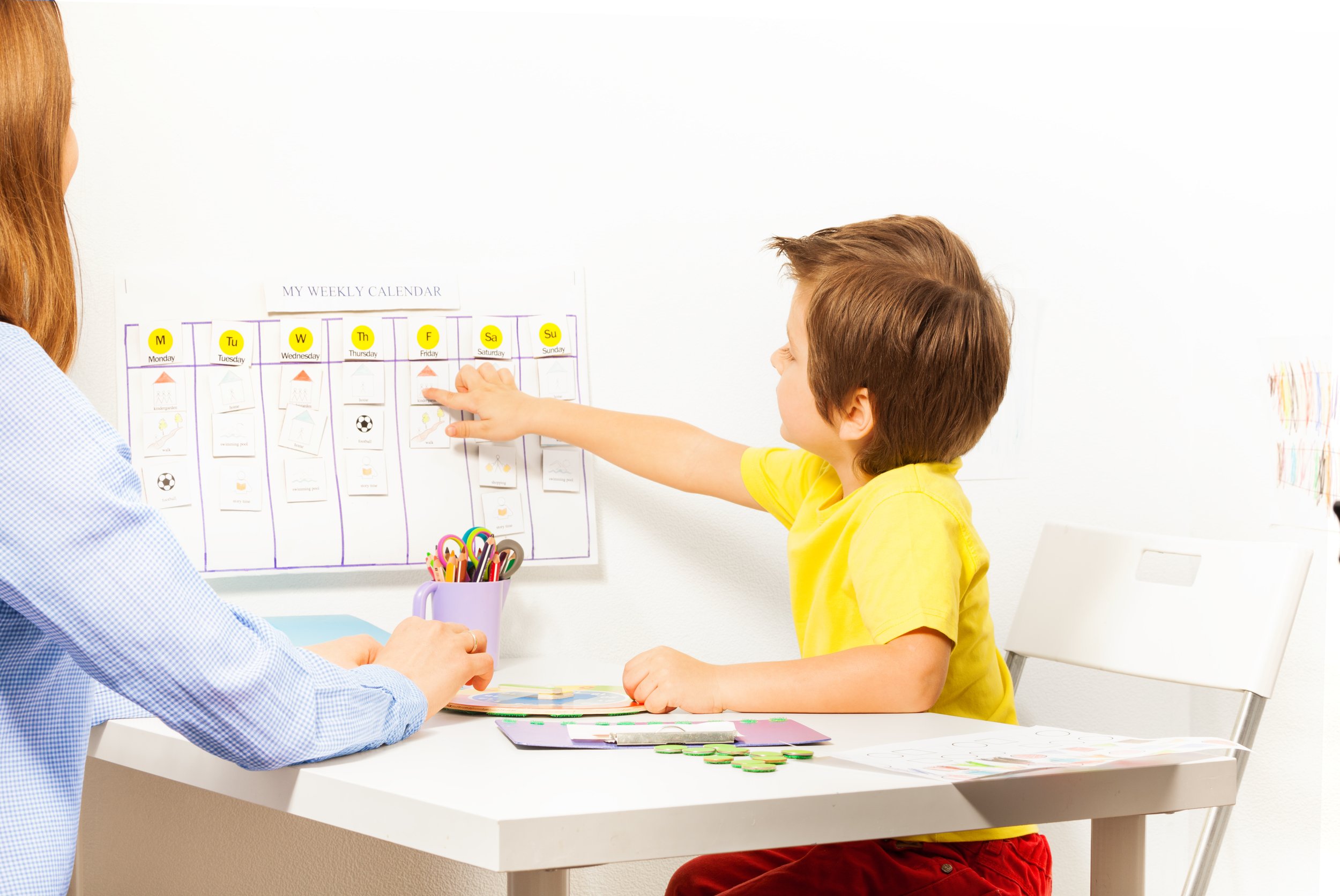How Can I Make Learning More Hands-On for My Kid Who Loves to Move?

My 7-year-old needs to move all the time. That’s fine with me, but I’d love to find a few ways to make movement part of our everyday learning activities. We follow a fairly relaxed curriculum, but I’m committed to everyday math, reading, and science. Any ideas to bring a little more kinetic energy to these daily classes?
Some kids just need to move, and it’s great that you make space for your child be active during the day. You probably already know that readalouds can be a great time to build Legos, color, play with clay, bounce on a mini trampoline — my 10-year-old still loves to do this! — or balance on a yoga ball, but I’ll mention these things just in case.
As far as classes go, look for ways to add activity to what you’re already doing. For instance:
Scramble up the letters of spelling words on individual cards, and race back and forth across the room to collect cards to spell each new word. Or if you have the floor space, tape letters to the floor and let your student jump out the spelling of each word.
Do jumping jacks to answer short addition and subtraction problems.
Set up a stack of numbered cups, and let your student toss a ball to knock two down. Add the sum of the numbers on the dropped cups.
Practice simple math or multiplication tables standing on one foot. (Try to increase how many you can do in each balancing session.)
Take a math walk: Grab a stack of flashcards, and head outside. Each time your student answers one, take that many steps.
Learn the sign language alphabet, and practice spelling out words with your hands. (This doesn’t burn a ton of energy, but it gives a physical focus to spelling that can be helpful for kinetic learners.)
This was originally published in the winter 2018 issue of HSL.
When your marriage ends, homeschooling probably isn’t the first thing on your mind — but navigating a divorce while homeschooling can bring up unexpected issues.
Whether you live to color-code or need a system that flexes and changes with your family’s needs, keeping good homeschool records is essential. And you can do it — all you need is a system that you’ll actually use.
Aminata and Malcolm have discovered that a purposeful morning routine is the perfect start to their homeschool day.
A love of reading comes naturally for some kids and not-so-naturally for others, but you can do a lot to make your home a space where reading is an important part of everyday life.
When your homeschool starts to feel like more work than fun, it’s time to make a change.
If you’re homeschooling your middle schooler, you probably have a lot of questions. The good news: It’s going to be pretty exciting to navigate these big changes with your homeschooler.
Planning your homeschool year is about more than just making a weekly checklist or figuring out what to use for science. If you want your homeschool to grow with you and take your kids where they want to go, keeping these questions in mind can help you stay on track.
The best way to plan your homeschool year is the way that works best for your particular homeschool — and like all the rest of homeschooling, it may require some trial and error to find the right balance. That’s why our “perfect” planning method is adaptable as you need it to be: Use the skeleton to make a loose frame for the year, or go all out and plan every week in advance. It’s your homeschool. Make a plan that works for you.
A homeschool retreat can be inspiration, direction, and sanity saver all in one — and if you don’t have a secular homeschool conference nearby, you can create your own.
Chances are, you’re doing better with this whole homeschool thing than you think you are. These six signs are all indicators that you’re on the right track — and we think that’s something you should celebrate.
5 surprising ways to build a homeschool life that works for your whole family — including you. “If your homeschool isn’t giving you personal satisfaction most of the time, something needs to change.”
It’s easy to get so caught up in your everyday to-learn lists that you lose sight of the bigger picture of what you want your homeschool life to feel like.
Reinventing your homeschool is just part of the process, but this six-step process will help your homeschool grow in the ways that work best for your family.
Your official last day of school can be whenever you want—so pick a date that matches your family’s homeschool rhythm (or don’t pick a date and have a year-round homeschool).
The secret to transitioning to homeschooling high school isn't so secret: Just keep doing what you've been doing, and trust that you've gotten to know your kid's academic abilities.
College isn't the only post-high school option for homeschooled teens. Whether you're in search of an alternate path or a great gap year, here are some options for what's next.
This easy organization method won’t stress you out and will make your life a whole lot easier when you start working on transcripts and other official paperwork for high school graduation.
Planning out your year doesn’t have to be scary or stressful.
There are two keys to a successful homeschool: The first is figuring out what works for your family, and the second is knowing when your carefully figured out system needs to change.
One essential skill homeschoolers don’t always get to practice: Turning work in on time.
There’s no one right way to use all that reading you already do to help your kids absorb information, think critically, and start making connections, but here are six strategies to get you started.
How do you break up with your kid’s teacher?
When you get that stuck-in-a-rut feeling — and we all do sometimes — these simple-to-pull-off changes can make your homeschool feel bright and shiny again.
“We loved the idea of living without a schedule, but we quickly discovered that we were miserable living without a routine.”
This is my go-to recommendation for new homeschoolers — it's designed to help you find your rhythm, build comfort with leading your students’ learning, and keep the learning going as you find your way. It’s basically a six-month, low-cost-investment guide to starting homeschooling.
If you’re homeschooling to get through the world health crisis, you totally count as a homeschooler — but what you need may not be traditional homeschool recommendations.
We rounded up our readers' best tips to prepare for back-to-school.
Navigating big changes in your homeschool life can seem like a scary prospect, but you’ve got all the tools you need to make your next big transition feel as exciting as it is stressful. Here’s what you need to know.
A more rigorous homeschool involves pushing further and deeper across the curriculum.
Amy Sharony is the founder and editor-in-chief of home | school | life magazine. She's a pretty nice person until someone starts pluralizing things with apostrophes, but then all bets are off.































A creative learning space is less about actual stuff and more about giving your children space to explore ideas in different ways.